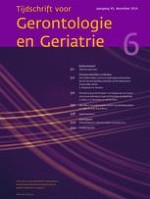01-12-2014
Verwijzen naar het hospice: verwijsgedrag van artsen en ervaren belemmeringen in Deventer en omgeving
Gepubliceerd in: Tijdschrift voor Gerontologie en Geriatrie | Uitgave 6/2014
Log in om toegang te krijgenPhysicians’ referral patterns and perceived barriers in the Deventer region in The Netherlands
Objective
To examine physicians’ perceived referral patterns and barriers to referral of terminally ill patients to a hospice (institute).
Design
Survey study among physicians practicing in hospital and other settings in the region of Deventer, The Netherlands, in 2011–2012.
Method
We translated two available American instruments into Dutch. The questionnaire assessed hospice referral, knowledge about hospice, attitudes and barriers and reasons not to refer. We queried physicians who had referred patients to the local hospice about expectations and suggested areas for improvement with two open-ended items.
Results
In total, 240 physicians received the questionnaire. The response rate was 47%. The physicians were generally positive about hospice care. They indicated experiencing few barriers in hospice referrals, but 32% of the physicians (21% of those practicing in the hospital, and 39% in other settings), indicated the patient being unready as a strong barrier. Half of the physicians (51%) believed that hospice is being underutilized and 22% (35% and 14%, respectively) thought that they would refer more frequently if they had more knowledge about hospice care. Of the physicians, 35% answered all six knowledge questions correctly. Communication with the hospice may be improved.
Conclusion
Despite positive attitudes toward hospice care, it may be underutilized due to poor knowledge and communication with the hospice. Perhaps, this is also due to limited patient-physician communication on prognosis, which further research may address.
